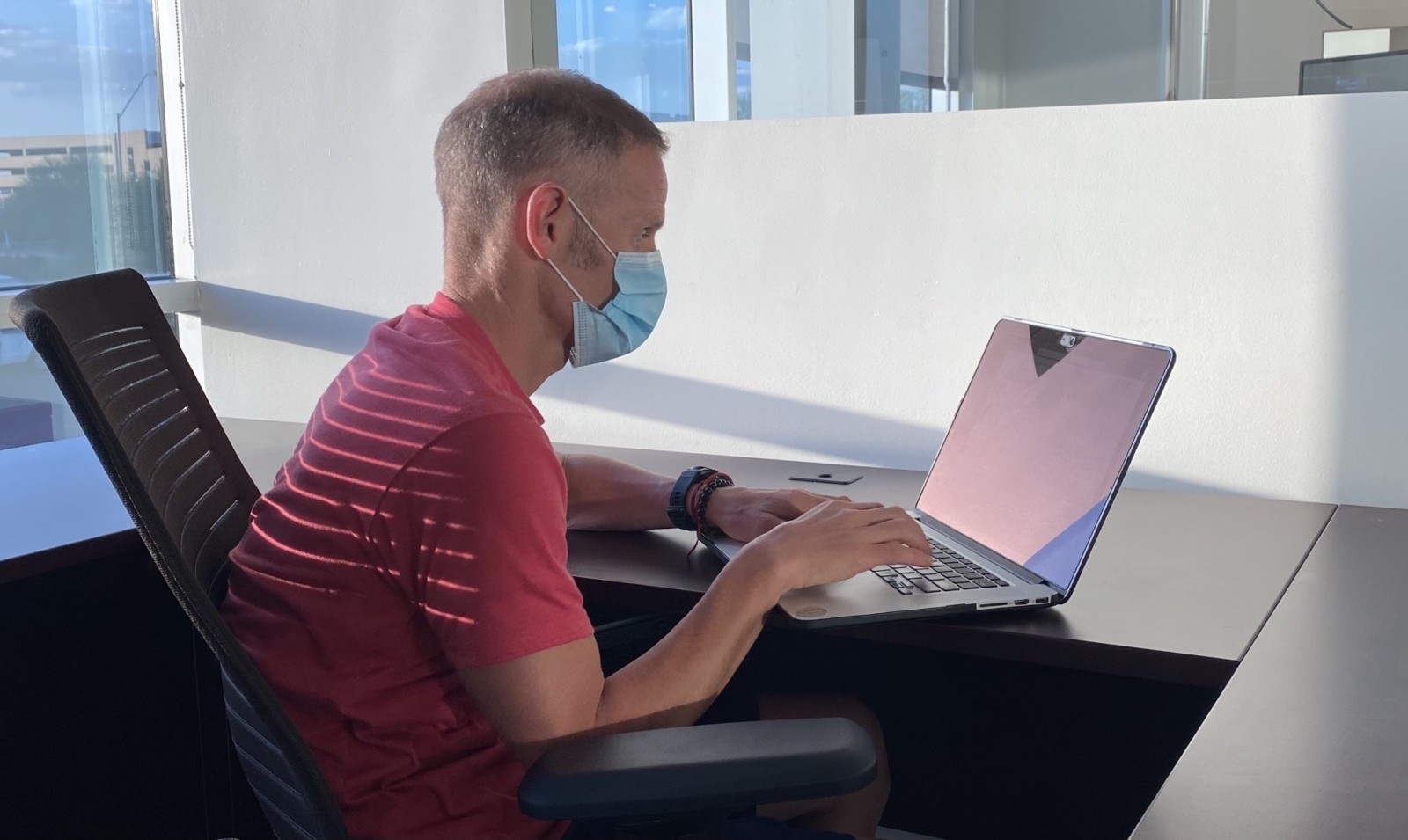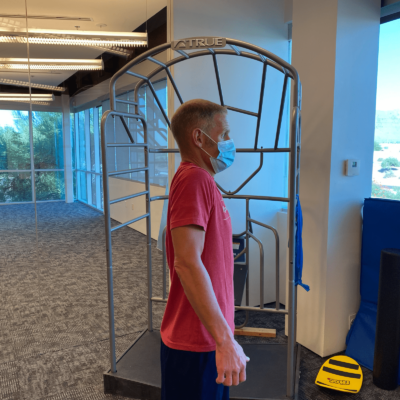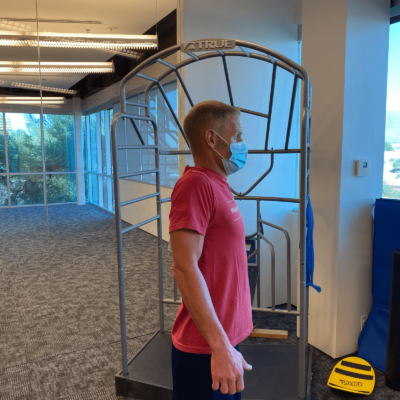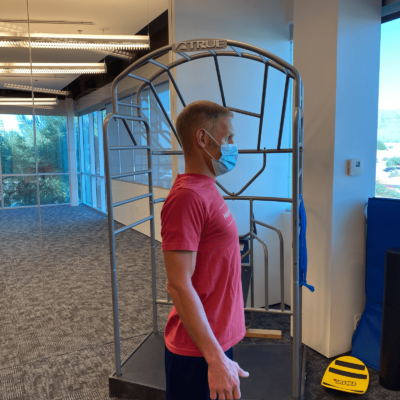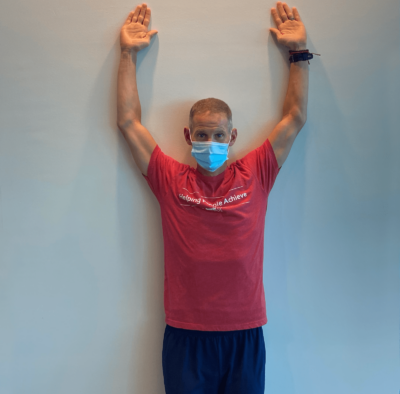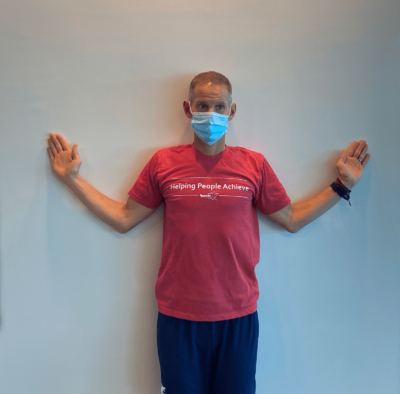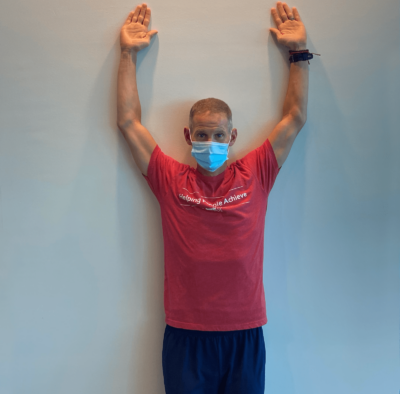We all remember hearing it growing up, “chin up, shoulders back.” Good posture isn’t just for family photos, there are real impacts to overall health that result from hunched shoulders. Our daily lives shape our posture and letting bad posture persist makes it more difficult to correct as the muscles in your body are retrained to thinking hunched shoulders and a bent neck are natural.
Our lives have become dominated by sitting at a computer and looking down at our phones, both of which encourage poor posture. Often times hunched shoulders develop unconsciously through a number of means, unsupportive chairs, frequently carrying heavy objects, or to avoid attention in uncomfortable situations. Hunched shoulders not only negatively impact our appearance and body language but they create stress and pain in the neck, shoulders, and upper back. If left untreated poor posture can lead to chronic pain, fatigue and even difficulty breathing.
Diagnosis
A physical therapist can assess if a patient has hunched shoulders and the severity of their condition but there are simple tests you can do at home that can show if you have hunched shoulders. An easy way to check is to have a family member or friend look at your posture. One indicator is if you appear to be slouching even if you try standing up straight. Another sign is if the palms of your hands face behind you when you are standing at rest. With normal posture your thumbs face forward and your palms face inward but hunched shoulders will force your thumbs to point inward and your palms to face back1.
If you are experiencing low back, neck or shoulder pain, a physical therapist will be able to assess your posture and determine the source of your discomfort. If you are experiencing posture related symptoms, a physical therapist can develop personalized treatment plan aimed at correcting the corresponding weakness. Hunched shoulders could be a sign of more complicated weaknesses or disfunctions as well so it’s important to speak with a medical professional as soon as possible.
Treatment
There are ways to treat and prevent hunched shoulders. A physical therapist will provide you with a unique exercise and stretch routine to address weaknesses or disfunctions discovered during the initial evaluation. Just as the muscles and joints had learned to hold poor posture at rest, they can be strengthened and trained to hold good posture.
Learn more about hunched shoulders impact on posture in “3 Exercises for Better Posture” on the Spooner Blog.
Stretching your chest and shoulders can relieve pain and is a great way to start improving your posture. These stretches are easy, everyday activities that can be incorporated into your daily routine to encourage improved posture.
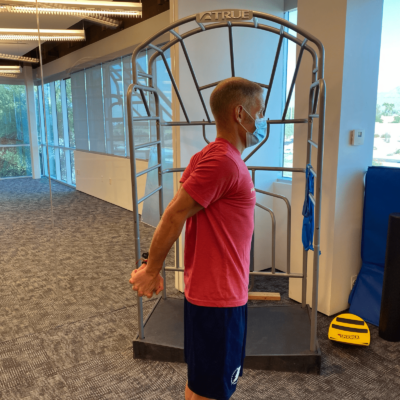
Handclasp
Standing up straight with your hands at your sides, reach behind your back and clasp your hands together. Gently push the hands away from the back side of your body until the chest opens up. Be sure to keep your head in line with your pelvis, not allowing the neck to push forward. Hold that position for 30 seconds.
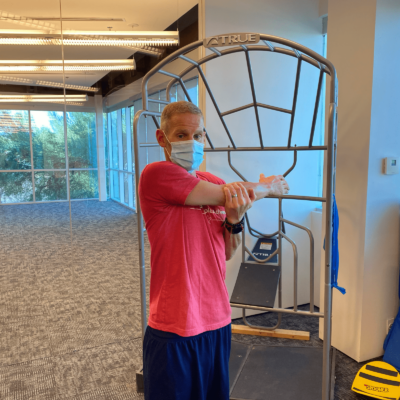
Upper arm stretch
Extend one arm straight out and place your other hand behind the elbow of your outstretched arm. Pull that arm slowly toward your chest as you feel a stretch in your shoulder. Hold the stretch for 30 seconds.
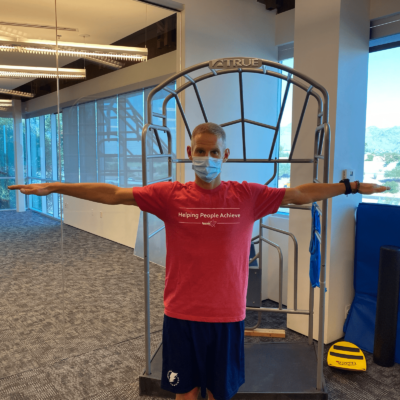
Arm circles
Standing in a ‘T’ pose, move your arms in small clockwise circles. Do 20 repetitions and then repeat with 20 small counterclockwise circles.
Shoulder lifts
Standing up straight with your hands at your sides, lift your shoulders up toward your ears as you inhale, then roll them back and down as you exhale. Do 20 repetitions clockwise followed by 20 repetitions counterclockwise.
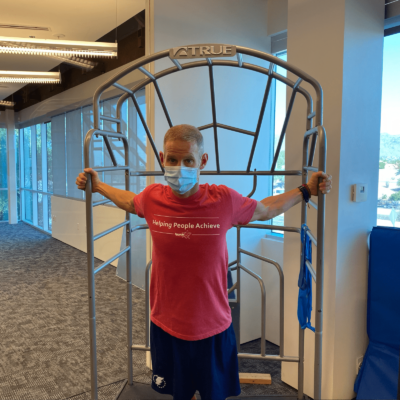
Door chest stretch
Standing straight in front of a doorframe, place one hand on either side of the frame, just above head height. Move one foot forward and gently lunge past the frame will stretch the chest and shoulders. Hold this position for 30 seconds.
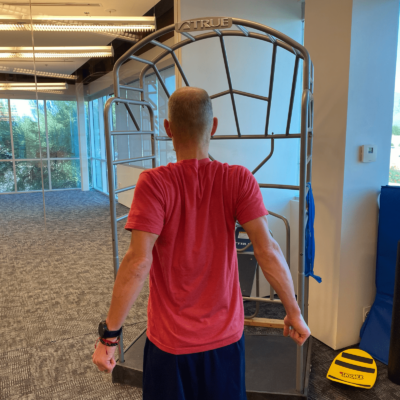
Shoulder blade squeeze
Sitting up tall in a chair, move both shoulder blades together as if trying to pinch them together. As they flex, the shoulders should move down and away from the ears. Hold this position for 30 seconds.
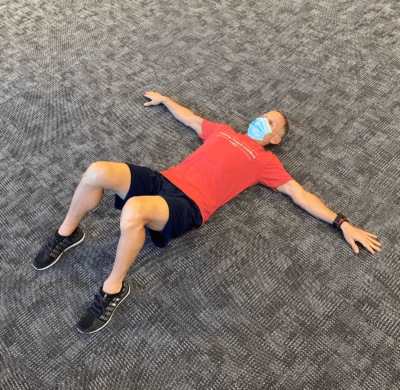
T stretch
Lay flat on your back with your feet flat on the floor and knees bent. Extend your arms out on both sides with your palms facing up. You should feel a stretch in your back and shoulders.
Wall angels
Keep your tailbone, lower back, upper back, and head against a wall with your feet slightly forward. Your arms will both lay against the wall in a ‘W’ position. With your arms running along the wall reach up above your head and then return them to their starting ‘W’ shape.
As your muscles begin to recover and increase in range and flexibility, you can begin to focus on building strength to support your posture goals. Incorporating planks, pullups, seated rows, and reverse flies into your workout will help strengthen and support the muscles and joints responsible for maintaining proper posture. Are you ready to take on your poor posture and show the world your confidence? Schedule an appointment with Spooner Physical Therapist to get the personalized care you need to start moving better and feeling better.
If you are experiencing shoulder or upper back pain, schedule an appointment today!
References
- Johnson, J. (2017, July 25). Ways to fix rounded shoulders or ‘mom posture’. Retrieved from Medical News Today: https://www.medicalnewstoday.com/articles/318556
- Roland, J. (2018, Nov 26). How to Fix Hunched Shoulders. Retrieved from Healthline : https://www.healthline.com/health/hunched-shoulders

